
What a better way to spend the July 4th weekend than down by the water. Â The old canoe in the basement was dragged out and strapped onto the Subaru station wagon and brought down to the only freshwater tidal marsh in Pennsylvania. This is what Indian creek, our Morris park creek drains into. Â Here is Isabelle canoeing on Darby Creek.
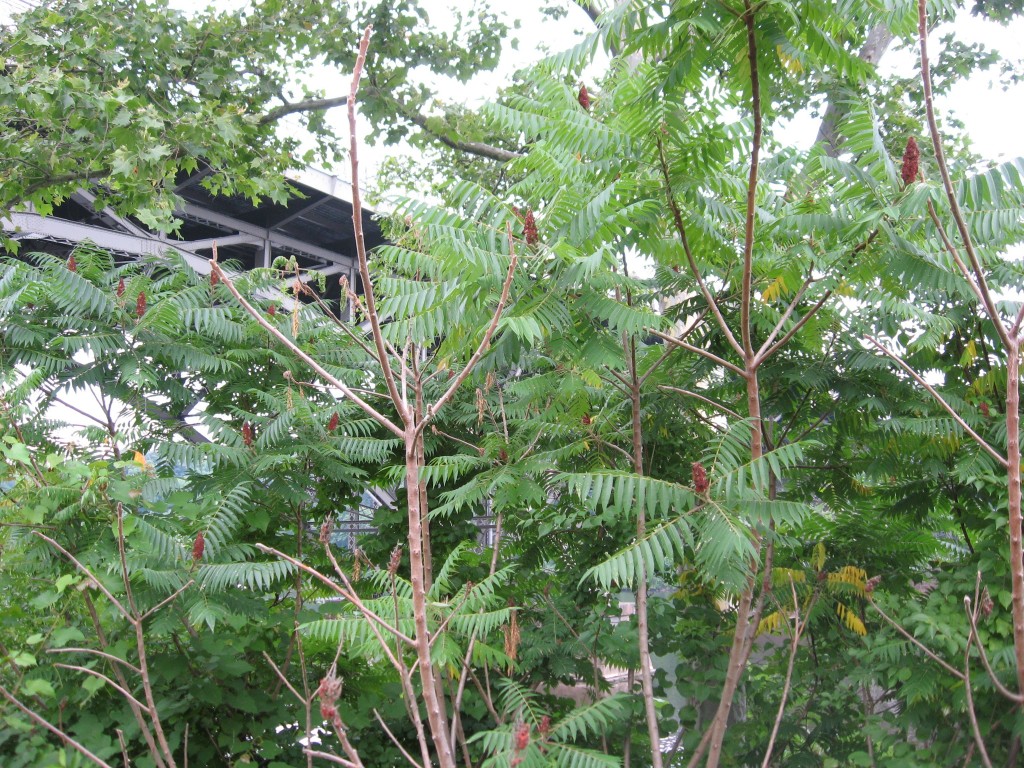
We also dusted off the 1959 Chevrolet Impala sitting in the driveway and headed for the Schuylkill River in West Fairmount Park.

Before cruising the Belmont Plateau we settled in for a leisurely park and walked along the river. Â Here we discovered a nice patch of Staghorn sumac (Rhus typhina) just below the Strawberry Mansion Bridge.
- Staghorn Sumac and the Tree of heaven, West Fairmount Park, Philadelphia Pennsylvania
The picture above may seem pretty straightforward but is actually an astonishing representation of two different species altogether.  To the upper right is the native Staghorn Sumac.  The lower left is the non-native invasive  Tree-of -Heaven (Ailanthus altissima).  They both look so similar at first glance and are growing right next to each other, with pinnately compound leaves about the same size with reddish leaf stems. To the untrained eye these two trees look almost identical.  We bring this up because there are just a few Staghorn sumac specimens growing in our area of scope in Morris Park, and they are surrounded by Ailanthus. Knowing the differences is helpful when we undertake our yearly maintenance effort at pulling the hundreds of Ailanthus seedlings up.
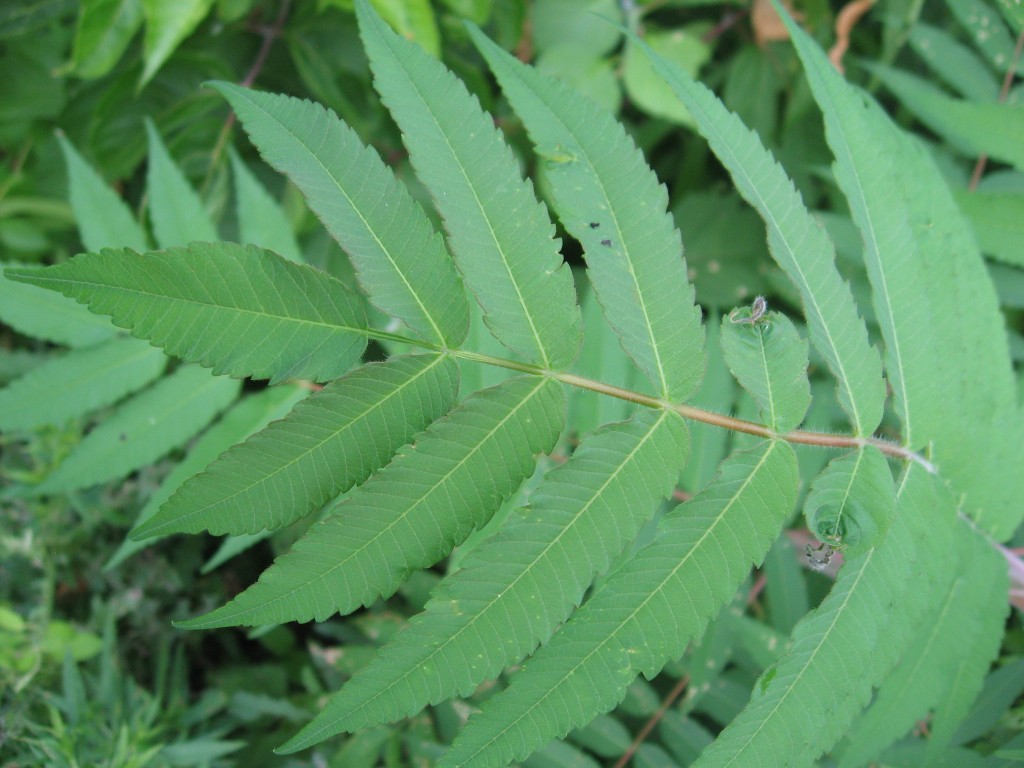
The leaflets of the  Staghorn sumac are dentate, with toothlike edges, while the Ailanthus  leaflets are smooth. The young twigs of the Staghorn sumac are densely hairy, a give-away characteristic of this large shrub or small tree, as well as the origin of its common name.  The dense hairs along the new growth resembles that of the antlers of a young male deer. The Staghorn sumac has incredible ornamental value.  Its reddish-brown seedpods and lush pinnately compound leaves and shrub status make it a great back-round plant.  Isabelle’s brother has one in his back yard in the suburbs of Paris, France.  Every year he prunes it so it has a nice shape.
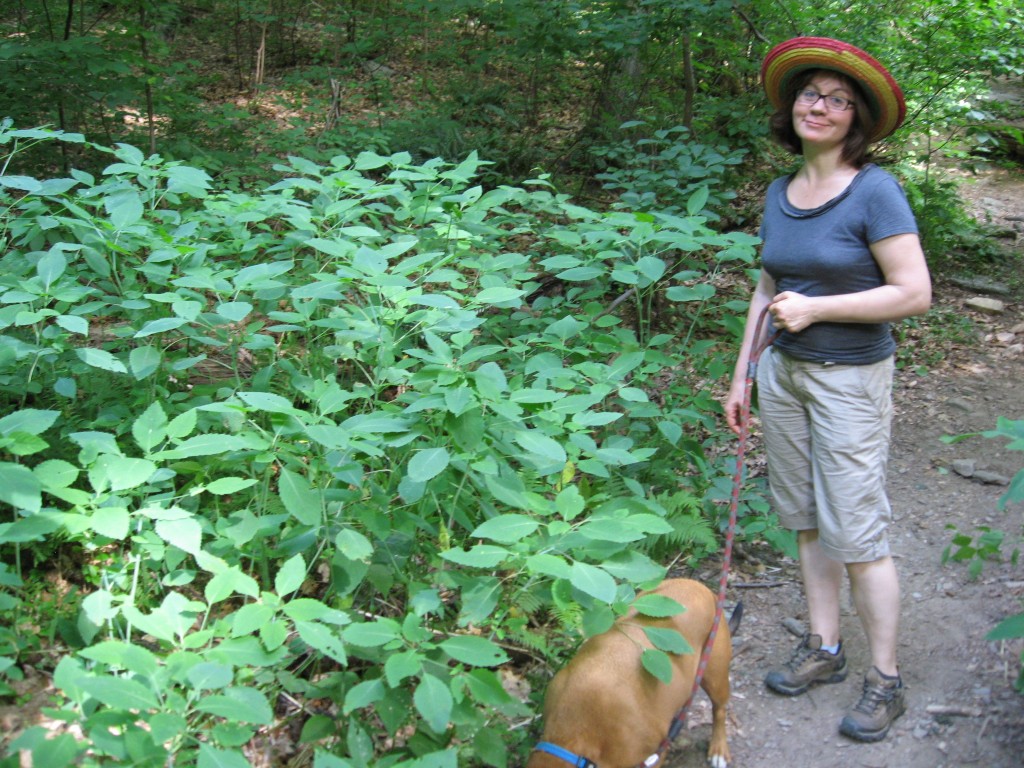
On July 4th itself we chose the Wissahickon to spend the afternoon walking Keeba, only 15 minutes drive from Morris Park. Â Here we explore a magnificent patch of the native wildflower Jewelweed (Impatiens capensis). Â This one tops the list of our favorite flowers. We look forward to seeing them flower every summer. Â We were careful to make sure Keeba did not prance about in this patch of very delicate plants. Â The blue-green stems are very fragile.
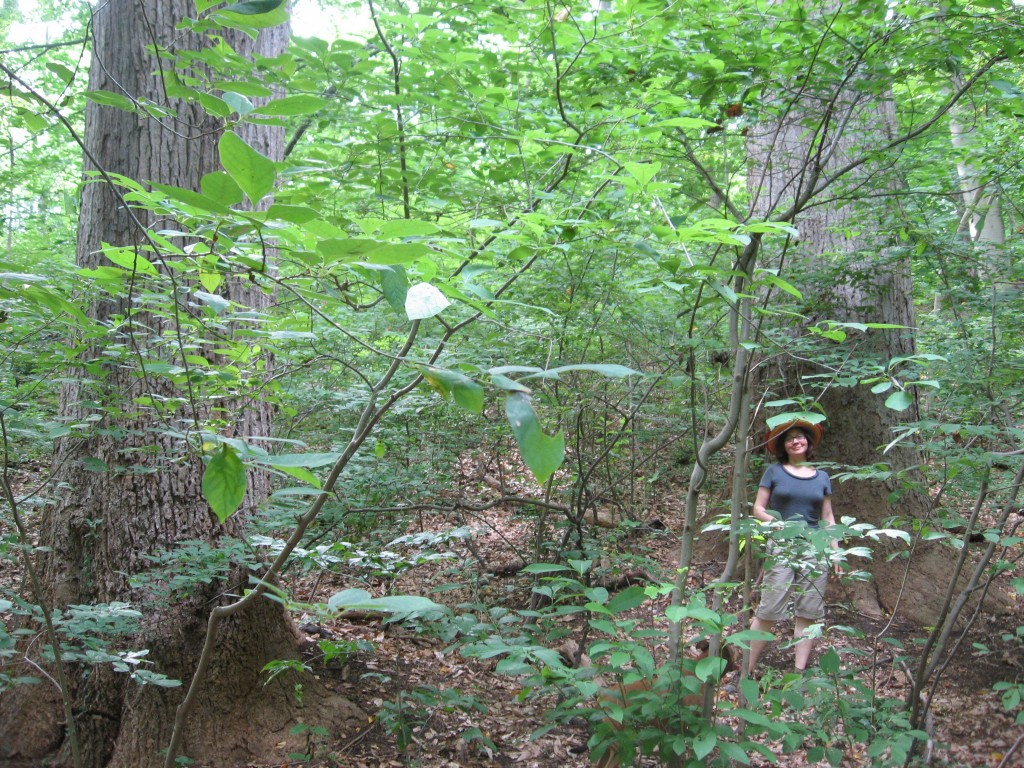
The Tulip poplars in The Wissahickon are memorable.



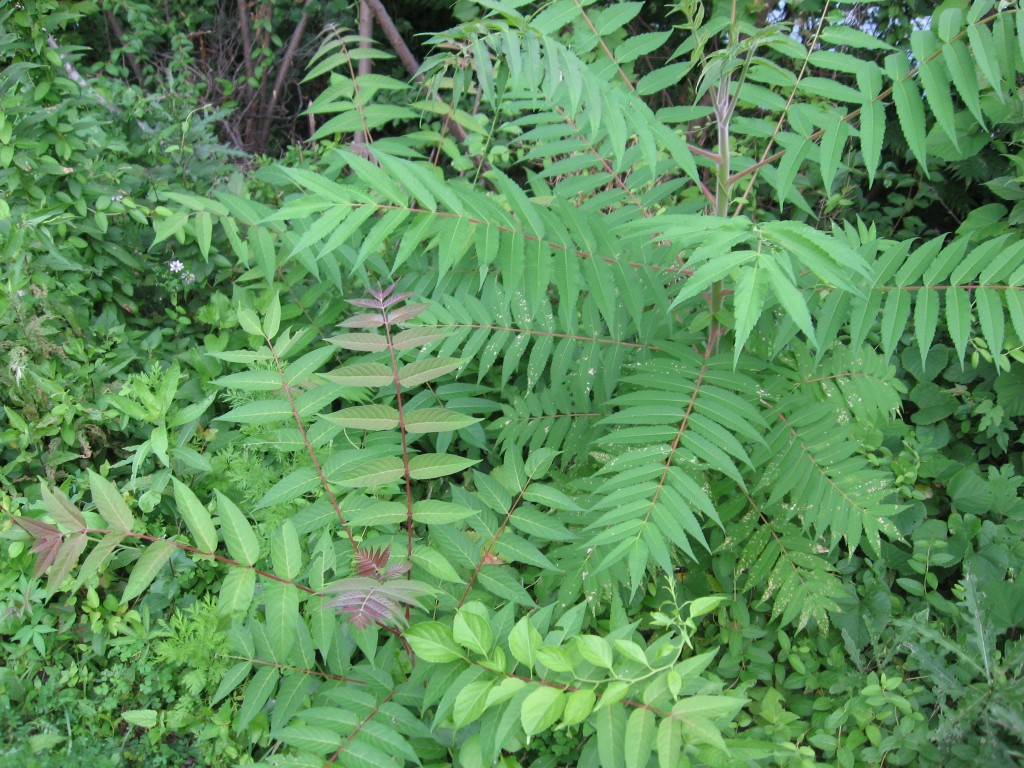
This post is very illuminating. I notice Isabelle walking the dog, and she is paddling the canoe, and, again, that’s her waxing the car…. I need one of those cameras that makes the little woman do all the work. And, she looks like she’s enjoying it! What kind of camera is that?
The canon powershot a 550 will allow you to control all manners of man and woman. Just point and shoot. Even birds will stop in their tracks. The bald eagle we saw in the Heinz National wildlife refuge could not get enough of our powershot a 550. Isabelle is swapping out the spark plugs in the ’59 impala in the hopes of being photographed by the canon powershot a 550. It does use batteries and it is not very glamourous, but it does the job!
Great post!
Sean, thank-you for your comment. we appreciate your comments and positive feedback. Always feel free to put in your two pennies about our posts. We are trying to get folks to think about the natural environments in their areas and also to inspire people to visit these areas and appreciate the beauty around them.